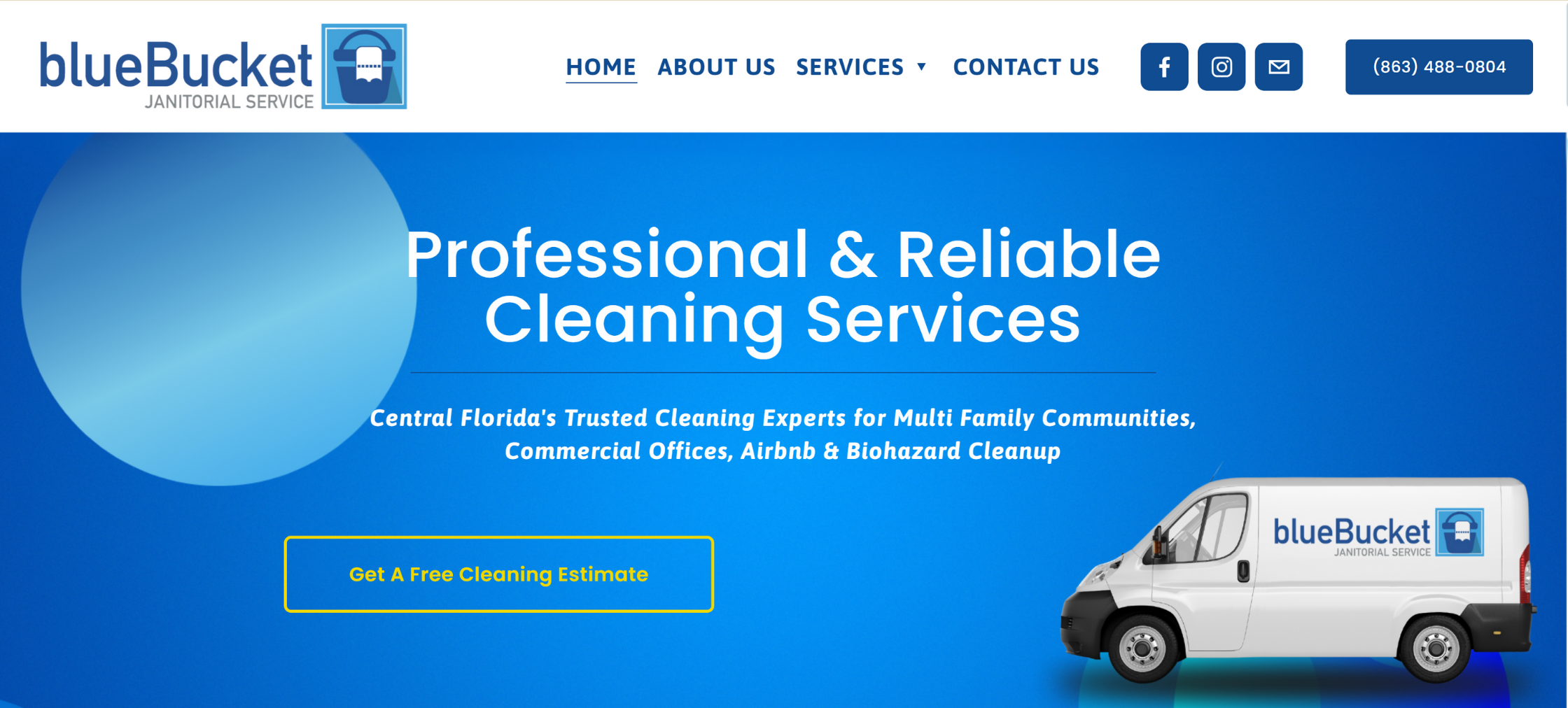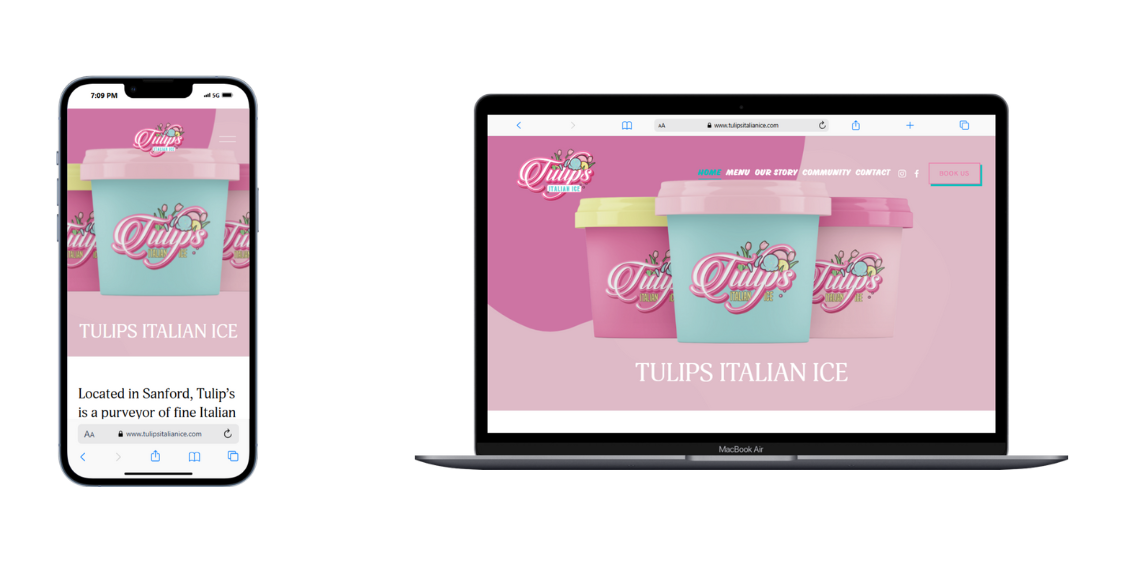What Makes a High-Converting Website? Design Tips for SMBs 2025
Your website shouldn’t just look good—it should work hard for your business.
A high-converting website turns visitors into customers, calls, and leads. For small and medium-sized businesses (SMBs), that can be the difference between success and being overlooked. Website design isn't only about visual elements but part of your marketing efforts.
The good news? You don’t need fancy tech or huge budgets—just smart, thoughtful design.
This guide breaks down what goes into a high-converting website, with simple tips you can apply (or ask your web designer to handle). Let’s get to it.
Great Website Foundation
✅ Simple, User-Friendly Navigation
Think of your navigation like a store layout. Visitors should find what they need fast; if not, they'll leave. Clear, intuitive navigation makes it easy.
Keep it simple:
Use labels like “Services,” “About,” or “Contact”
Stick to 5–7 top-level items
Group related pages under dropdowns, if needed, for a clean design
If someone lands on your homepage looking for your pricing or service options, they shouldn't have to dig for it.
💡Pro Tip: Use a sticky nav bar (a menu that stays at the top as they scroll) so users don't get lost on long pages.
Example navigation from a real SMB website we built at New Level Digital.
✅ Engaging Visuals and Interactive Elements
Design should guide attention, not just look flashy. Use high-quality images, short videos, or interactive touches to encourage user engagement.
Keep it clean:
Use white space to let your content breathe
Make sure your colors and fonts are easy to read
Use bold buttons or color blocks to highlight your CTAs (Calls to Action)
Too many design elements competing for attention can overwhelm the customer experience. Creating a brand kit can help you create branded assets and maintain a clean design throughout.
Instead, think of your layout like a well-organized store—with clear signage, inviting displays, and space to breathe.
💡Pro Tip: Many SMBs partner with web designers who specialize in high-converting website design to get this just right.
✅ Mobile-Responsive Design
More than half of your visitors are probably browsing on their phones. If your site isn’t mobile-friendly, you’re losing business.
A mobile responsive website adjusts automatically to any screen size. It’s easier to navigate and faster to load.
Mobile must-haves:
Large, easy-to-tap action buttons
Fast load times
Minimal pop-ups
Easy-to-read text
Example of mobile-responsive design: The same website adapts seamlessly to desktop and mobile views, improving user experience and supporting consistent branding.
Think about user behavior. Picture someone checking your site while standing in line for coffee—they should be able to find your number or CTA with one thumb.
💡Pro Tip: Mobile-friendly sites tend to rank higher in search engine results, increasing the likelihood of conversion.
Drive Visitors To Your Goals
✅ Clear, Benefit-Driven Messaging
Your homepage should show your target audience why you’re the right choice in seconds.
Focus on benefits, not fluff.
What’s in it for them? How does your service make their life easier, better, or less stressful? Let visitors know you understand their needs.
Example:
✔️ “Never Worry About a Broken AC Again”
❌ “Welcome to XYZ Cooling”
Every headline should connect to a pain point or solution that your potential customers care about. Clarity = higher conversion rate.
✅ Compelling Calls-to-Action (CTAs)
CTAs guide users to act. Instead of being pushy, high-converting website content should be clear, bold, and benefit-focused.
Better CTAs:
✔️ “Schedule Your Free Estimate”
✔️ “Get Your Custom Quote”
❌ “Click Here”
Where to place your CTAs:
At the top of the page
After important sections
In the footer
You’re not forcing anything—you’re simply making it easy for people to act when they're ready. A visitor shouldn’t have to scroll far or think twice.
✅ Fast Load Times and Technical Performance
Slow websites drive potential customers away, especially on mobile. The faster your site loads, the better the experience—and the more likely someone is to stick around.
Tips:
Compress large images
Choose a reliable host
Minimize unnecessary scripts or widgets
Run a free speed test at Google PageSpeed Insights
Aim for fast and functional. Page speed doesn’t just impact user experience—it affects your search rankings, too.
Conversion Rate Optimization
✅ Trust Signals (Social Proof)
People trust people. Social proof plays a key role in marketing strategies. Show customer testimonials, 5-star reviews, certifications, and recognizable client logos to help build trust fast.
Placement:
Near your CTAs
On your homepage
On your landing page
Where people decide to reach out
💡Pro Tip: Add headshots of loyal customers or recognizable logos to boost credibility. A friendly face or familiar brand goes a long way.
Even a short customer review with a photo from a satisfied client adds value because your target market wants to see someone like them finding success with your help.
✅ SEO: Get Found First
Search engine optimization (SEO) helps people find you on Google.
You don’t need to be an SEO expert to practice conversion optimization. Just cover the basics and make sure your content matches what they’re searching for.
Simple SEO tips:
Use relevant keywords naturally in your headings and text
Write clear page titles and descriptions (what the page is about)
Add text descriptions (alt text) to your images
Your website can’t convert if it’s buried on page three of search results. Think of SEO as helping search engines help your future customers find you.
💡Pro Tip: If you're unsure where to start, consider reaching out to an SEO professional who can guide you through reaching your conversion goals.
✅ Continuous Testing and Improvement
Your website isn’t a “set it and forget it” tool. Tracking and improvement are a big part of the conversion process. Remember: small tweaks can lead to big results.
Try tools like:
Hotjar to see where users click or get stuck
Google Analytics to understand your traffic
A/B testing to compare small changes
Make some changes and track what works. Even small edits—like changing a headline or contact form—can boost results.
Data beats guesswork every time.
A high-converting website doesn’t have to be complicated. It just needs to clearly explain what you do, why it matters, and how someone can take the next step.
Function is the ultimate goal—blend smart design, clear messaging, and helpful structure.
If you're an SMB owner, start with this checklist. After all, small fixes can mean big improvements.
Need help creating a high-converting website design? Contact New Level Digital—we specialize in custom website designs built for real results.





